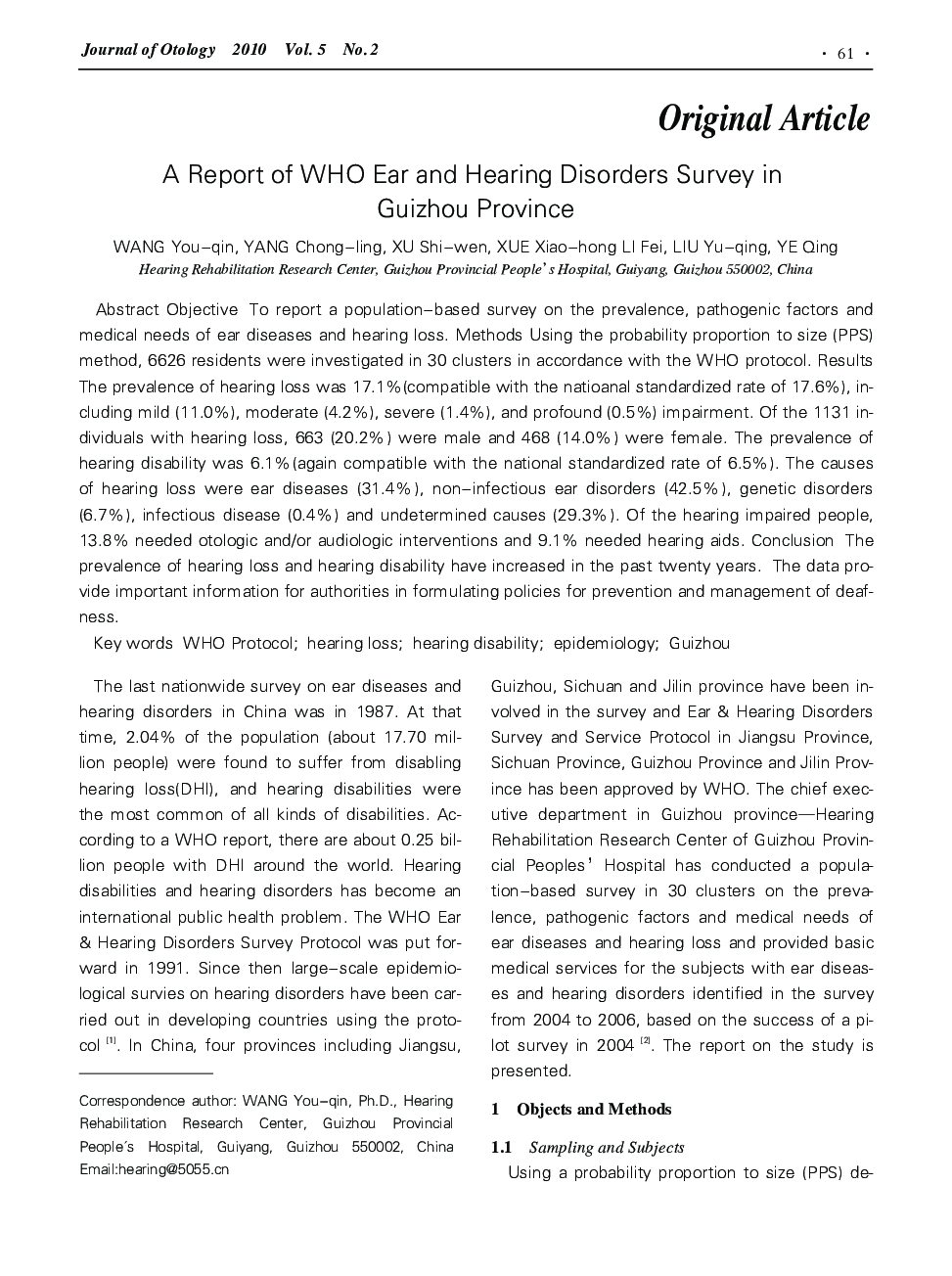| Article ID | Journal | Published Year | Pages | File Type |
|---|---|---|---|---|
| 4116782 | Journal of Otology | 2010 | 7 Pages |
ObjectiveTo report a population–based survey on the prevalence, pathogenic factors and medical needs of ear diseases and hearing loss.MethodsUsing the probability proportion to size (PPS) method, 6626 residents were investigated in 30 clusters in accordance with the WHO protocol.ResultsThe prevalence of hearing loss was 17.1%(compatible with the natioanal standardized rate of 17.6%), including mild (11.0%), moderate (4.2%), severe (1.4%), and profound (0.5%) impairment. Of the 1131 individuals with hearing loss, 663 (20.2%) were male and 468 (14.0%) were female. The prevalence of hearing disability was 6.1%(again compatible with the national standardized rate of 6.5%). The causes of hearing loss were ear diseases (31.4%), non–infectious ear disorders (42.5%), genetic disorders (6.7%), infectious disease (0.4%) and undetermined causes (29.3%). Of the hearing impaired people, 13.8% needed otologic and/or audiologic interventions and 9.1% needed hearing aids.ConclusionThe prevalence of hearing loss and hearing disability have increased in the past twenty years. The data provide important information for authorities in formulating policies for prevention and management of deafness.
